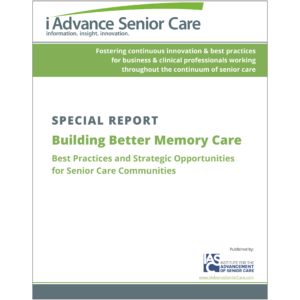When equipment malfunctions
Over the years, nursing homes have been required to provide increasingly complex medical care for their residents. To meet those challenges, the use of sophisticated medical devices, such as oxygen concentrators, pulse oximeters, defibrillators, mechanical lifts, and electric and specialty beds have become commonplace in most nursing facilities.
Because these devices directly affect the resident’s health and well-being, safe and reliable performance must be assured throughout the device’s lifetime. Even with warranties, many mechanical and electrical parts wear out and fail over time. That’s why routine safety inspections are necessary to avoid critical equipment malfunctions that can endanger a resident’s life. Please review the following situation and make changes as appropriate in your facility.
The situation
The staff at a small nursing home decided it was time to purchase a new mechanical lift for their residents. So they contacted a medical equipment supplier, who sent a salesperson to the facility with two lifts for them to test for a week. The salesperson showed the staff how to use the lifts and asked them to contact the supplier once they made a decision. After testing the lifts for a week, the staff decided to look at other options. So they called the supplier to come and pick up the lifts. A week went by and no one came for the lifts. A staff member called the supplier again and was reassured that the salesperson would stop by any day. The lifts were placed in storage until then. Three months went by and the lifts were still there, so after another phone call, the supplier finally told the staff that they could keep the lifts. Unfortunately, the salesperson had not given the staff an operational manual when he delivered the lifts. But the equipment wasn’t complicated, so the staff put them to use right away. It was determined that the safest way to use the lift was with two people and a sign was placed on each lift to remind staff to get help before using.
One of the residents who routinely used a lift for all transfers was an 87-year-old woman with a history of high blood pressure, osteoporosis, depression, and dementia. The woman depended on staff for all activities of daily living because she had severely impaired cognitive skills, lacked voluntary trunk control (when in a sitting position), and could not ambulate. Among the medications that she received was a blood thinner for treatment of deep vein thrombosis.
One morning, two certified nursing assistants (CNAs) went into the woman’s room to help her get ready for the day. As customary, they placed a sling under the woman and then attached it to the lift. As they began the transfer, one CNA moved the lift back, while the other attempted to move the wheelchair underneath her. Before the CNA could get the wheelchair in place, the sling arms suddenly separated from the lift arm and dropped the woman to the floor. As the woman fell, she struck her head on the bed’s side rail, which had been lowered. One of the CNAs went to get help, while the other one placed a pillow under the woman’s head for comfort. When the nurse arrived, she quickly assessed the resident, who had remained conscious during the whole ordeal. The woman did not seem badly injured, except one pupil was slightly more dilated than the other. Together, the three staff members transferred the woman to her wheelchair and then went about their normal routine.
About 20 minutes later, the woman suddenly became lethargic and had difficulty breathing. She was quickly transferred to her bed and was given oxygen. The nurse summoned an ambulance and notified the woman’s physician and daughter, who said she would be right there. Unfortunately, by the time the daughter and ambulance arrived, the woman had quit breathing. She had a do-not-resuscitate order, so heroic measures were not attempted. The staff consoled the family and her body was sent to the county coroner for examination.
Meanwhile, the lift was immediately placed in a locked storage area and the manufacturer was notified of the incident. The manufacturer sent a technician to the facility to examine the lift. The technician observed that a screw, which was still attached to the lift, had become unthreaded from the weight box. The technician checked the threads on the weight box and stated the bolt on the arm lift had intact threads that had not been stripped. The technician determined that the part had been slowly coming unscrewed and it just happened.
Days later, the county medical examiner informed the administrator that the preliminary autopsy report reflected that the woman had sustained a subdural hemorrhage secondary to the blood thinner when her head struck the side rail of the bed. As the family removed the woman’s belongings from the facility, the daughter advised the administrator that she had asked her attorney to contact him regarding a claim. Soon thereafter, a meeting was held between the parties and a fair settlement was agreed upon.
Risk management practices
In this situation, no one could have predicted that one screw coming loose could have caused such a tragedy. Unfortunately, there was no paperwork to prove that the lift had been routinely checked and serviced since its acquisition, other than the replacement of a battery. Nursing home providers should never take medical device safety for granted, no matter how new the equipment. You can minimize the risk of a similar situation happening in your facility by implementing the following risk management practices:
Develop a policy requiring that basic safety and performance checks are conducted on any device that is brought into the facility, whether it is brand new, used, or just back from repair. All such testing should be recorded in writing and added to the central file.
A service contract should be purchased with all complex medical equipment (e.g., oxygen concentrators, pulse oximeters, defribrillators) so the equipment receives the detailed, specialized inspections that are needed. Servicing dates should be kept in a tickler file so appointments can be made in a timely manner.
Ensure that all devices come with the manufacturer’s operational manual and that these are reviewed and added to the central file accordingly.
Develop a preventive maintenance schedule for each medical device, according to the manufacturer’s recommendations. Don’t forget to include therapy equipment as part of your routine safety inspections.
A copy of the maintenance schedule should be provided to each department director so that appropriate scheduling can be made without interruption of services to the resident.
Develop a visual checklist to perform routine safety inspections (see sidebar for examples).
Keep a log of monthly inspections and service medical devices, as needed. Keep reports and corrective action receipts filed with the monthly inspection logs.
Ensure that staff is trained on the proper use of all medical devices and that there is a system in place for staff to notify the maintenance department of any concerns and to remove the device from resident use until it is deemed safe by the proper authority.
And finally, the Safe Medical Devices Act of 1990 (SMDA) requires healthcare facilities to report deaths, serious illnesses, and injuries associated with the use of medical devices. Healthcare workers should follow the procedures established in their facility for such mandatory reporting.
By following these recommended practices, you will be better prepared to protect the safety of your residents who may need to use special equipment now and into the future.
Linda Williams, RN, is Long-Term Care Risk Manager for the GuideOne Center for Risk Management’s Senior Living Communities Division. She previously served as Director of Nursing in a CCRC and as a nurse consultant for two corporations with numerous long-term care facilities in Iowa. The GuideOne Center for Risk Management is dedicated to helping churches, senior living communities, and schools/colleges safeguard their communities by providing practical and timely training, and resources on safety, security, and risk management issues. For more information, phone (877) 448-4331, ext. 5175, e-mail
slc@guideone.com. More information is available on the Center for Risk Management’s Web site at
To send your comments to the author and editors, e-mail williams0408@iadvanceseniorcare.com.
Sidebar
Performing a safety inspection
Wheelchairs, gerichairs, shower chairs, commodes, and similar devices:
✓ Casters and wheels should be checked for worn bearings or missing parts.
✓ Brakes and brake extensions should be in good repair and able to hold the chair immobile during transfer.
✓ Seat covers, back, and arm rests should be in good repair, not missing screws, torn or cracked; and foot and leg rests should be in good repair and function appropriately.
Walkers, canes, and similar devices:
✓ Checked for loose screws, hardware, or bent frame.
✓ Rubber tips should be present and the device should be in good working order.
Mechanical lifts:
✓ Check for loose screws, hardware, or bent frame.
✓ Locks and casters should work properly and lock effectively.
✓ The sling should be in good repair and stain-free.
✓ The scale should be calibrated accurately and, overall, the device should be in good working order.
Resident beds:
✓ Check the bed frames, side rails, and mattresses for areas of possible entrapment.
✓ Check for loose screws, hardware, or bent frames.
✓ Locks and casters should be working properly and lock effectively.
I Advance Senior Care is the industry-leading source for practical, in-depth, business-building, and resident care information for owners, executives, administrators, and directors of nursing at assisted living communities, skilled nursing facilities, post-acute facilities, and continuing care retirement communities. The I Advance Senior Care editorial team and industry experts provide market analysis, strategic direction, policy commentary, clinical best-practices, business management, and technology breakthroughs.
I Advance Senior Care is part of the Institute for the Advancement of Senior Care and published by Plain-English Health Care.
Related Articles
Topics: Articles , Facility management , Operations











